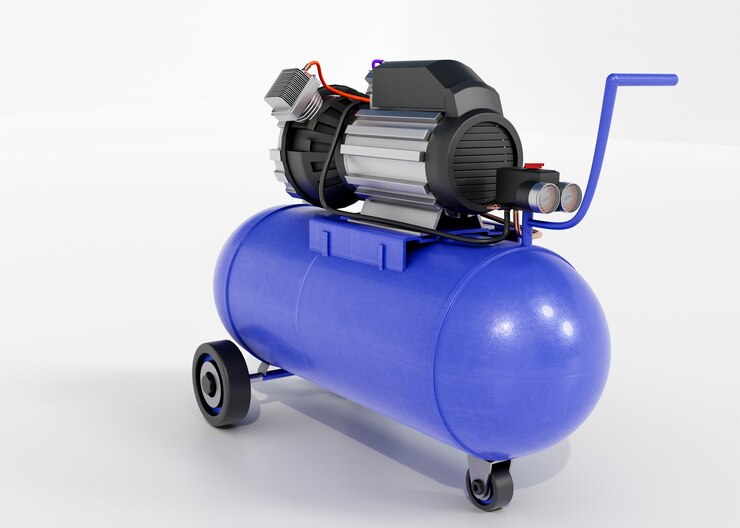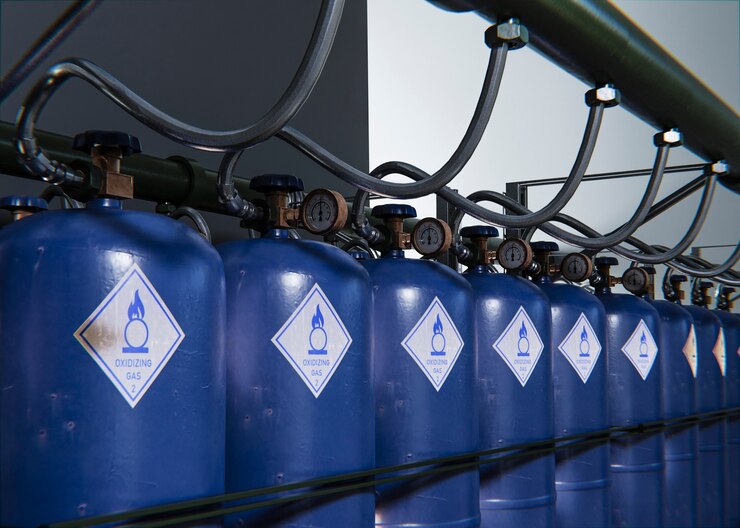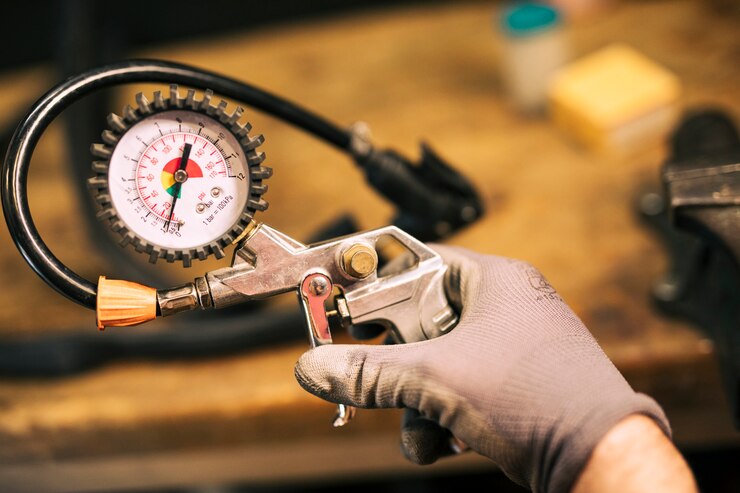What is High Flow Screw Compressor? A-Z GUIDE 2024
At the heart of each booming manufacturing factory; a humming construction site project or sprawling power plant is a quiet force. These are the industrial air compressors. High-flow screw compressors provide compressed air to power many jobs. But among air compressors, one variety is supreme for high-intensity jobs. This article will delve into the inner workings of High Flow Screw Compressor, clear away some of that confusion over the different styles on offer, and showcase where this brute strength of compressed air serves best. By the time we finish, you will have gained a clear understanding as to (X) why these compressors are the choice of industries needing reliable and efficient compressed air.
Positive Displacement vs Centrifugal
Compressors are divided into two main types:
Positive displacement and centrifugal
A positive displacement compressor, like a rotary screw compressor, is different in structure to a certain extent–it can be thought of as the opposite of a turbine. The air in a chamber is gradually compressed at constant volume and thus increased in pressure.
If you push down on the plunger of a bicycle pump, this can be seen as an example. In contrast, centrifugal compressors use high-speed impellers to accelerate a gas. This kinetic energy is then turned into pressure. Imagine a child at the pinwheel playing with his bar(center) spinning in a forceful wind.
Understanding Rotary High Flow Screw Compressor
The heart of a high-flow screw compressor is now being described, devoted to examining the operation that is happening within this crucial mechanism named “rotary screw mechanism”. This innovative design is made up of a male and a female rotor, both of which are screw-shaped.
The female rotor inside forms a lock, and from outside air flows into space (referred to as a working chamber) between the male screws–that this happens is not seen by onlookers who look at the illustration pages where only one screw appears. They turn in opposite directions, and as they do so the grooves trap air squeezed into them.
High Flow Rotary Screw Compressors Types
Oil-Lubricated Balancing Purity & Efficiency vs. Oil-Free High-flow rotary screw compressors come in two main types:
Oil-Free High-flow rotary screw came to pass that there existed oil on the rotors. This oil forms a film that reduces friction and prolongs the efficiency of the whole system’s life. Yet there is no free lunch: as compressed air leaves these machines, a small amount of vaporized oil inevitably gets along with it.
This could be nothing more than an annoyance when you are using pneumatic tools such as chipping hammers or grinders. But for food and drink industries or electronics manufacturing where even the slightest trace of contamination would be highly undesirable. Then it becomes very important indeed. For that reason are there oil-free rotary screw compressors?
Special bearings and coatings are employed so that there is no need whatsoever to lubricate them with oil. So after being compressed air from an oil-free compressor spreads out in its total. On the other hand, oil-free screw compressors are slightly less efficient and maintenance costs are higher than those for oil-inj*/red systems.
Fixed speed rotary screw compressor
Fixed-speed compressors are prone to energy loss at periods of apparent low demand, as they would continue running full bore regardless. An example is an air conditioner’s compressor—the motor runs at an almost constant speed regardless of what it is called to do.
During these times, energy is constantly consumed by over-run of the air recycling lä ventilation, while little or perhaps no power input reaches equipment. This energy converted from standing charges to useful output is referred to as utility wastage. Energy loss in fixed-speed types of rotary screw compressors is by contrast offset with energy-recovery measures.
High Flow, High-Performance Compressors and Their Uses
High-flow screw compressors are the mainstays of the industrial compressed air world. Their ability to provide a constant stream of high-pressure air makes them well-suited to a wide variety of demanding applications. Here are some major industries that depend heavily on these compressors:
Manufacturing: From powering the robots that run assembly lines to operating paint booths and cleaning rooms, the production of high-flow rotary screw compressors is the vital cornerstone for so many industries.
Construction: This machine is what keeps the blades spinning on air-driven tools for drilling, grinding, cutting, or shearing. Without its powerful support, construction work cannot proceed on schedule.
Power Generation: In power generating plants, compressed air plants perform functions such as refrigeration (TT R) systems for control plant cooling systems, and other cleaning and equipment checkouts. These all require a continuous source of compressed air that can be quickly turned on when needed or shut down again just as rapidly after use without any subsequent delays in starting up machinery once more.
Oil and Gas: High-flow rotary screw compressors are widely used in the oil and gas industry for a range of tasks, including well drilling, pipeline cleaning, and the supply of instrument air.
Food and Beverage Applications
In cases where air purity is paramount, oil-free rotary screw compressors are preferable. They offer the high flow of compressed air needed for processes such as bottling, conveying, and mixing, while eliminating any possibility of contamination with lubricating oils that might affect the flavor or quality of the product.
Beyond the Various Core Industries
The applications for high-flow rotary screw compressors go far beyond these basic areas. They are also essential in:
Chemical Processing: Supplying air for agitation, mixing, and pneumatic conveying of chemicals.
Textile Production: Providing power to weaving looms, yarn dyeing operations, or fabric-cleaning equipment.
Pharmaceuticals: Delivering sterile air to pharmaceutical manufacturing and packaging processes.
Plastics Industry: Providing air for blowing molds, cleaning parts or running other pneumatic equipment.
Wastewater Treatment Plants: Oxygenating tanks in sewage treatment plants is critical.
These examples only serve to scratch the surface. And the elasticity of high-flow rotary screw compressors allows them to support a huge variety of features in the industry.
The Power of High Flow Screw Compressor
High-flow rotary screw compressors are designed with ease of use and maintenance in mind. The control panel is usually intuitive and easy to use, even for non-engineers.
In addition, the design of China Compressors, Air Compressor, Natural Gas Compressor allows for convenient access to internal parts so that routine maintenance can be more easily carried out than with other types. This means less time with the compressor off-line and a reduced overall cost for your operation over the long term.
Cutting Down on Energy Consumption
Energy efficiency is a top concern in any industrial facility. High-flow rotary screw compressors enjoy significant efficiency gains compared with traditional reciprocating compressors. Their design of positive displacement achieves minimum energy losses, and using VSD technologies like automatically adjusting engine speed according to air demand further optimizes energy consumption. As a result, your power bills get lower and your environmental profile shrinks more rapidly.
High Flow Screw Compressor Reduced Noise Levels
Among the many problems associated with industrial facilities is also noise pollution. High-flow rotary screw compressors are characterized by their less noisy operation compared to reciprocating compressors.
This is because the screws rotate continuously and smoothly, as opposed to the reciprocating compressors’ back-and-forth motion. The enclosed designs of rotary screw compressors further contribute to noise reduction, providing a more comfortable working environment for your employees.
Durability and Reduced Wear & Tear
The sturdy design and high-quality materials employed on high-flow rotary screw compressors assure durability. With no valves and minimal friction between the rotors, Higher endurance of the compressor both reflecting in fewer repairs and lower failure is achieved through reduced wear and tear. This, in the end, means savings for you over the long term.
Compact Design for More Efficient Work Areas
Industrial plants are often space-starved, and high-flow rotary screw compressors are the best choice for layout. They are compact against reciprocating compressors of a similar performance level, giving greater use with a lesser area (possibility). This then frees up floor space within your factory for other machines or processes, providing the best results possible.
Additional Considerations for High-Flow Rotary Screw Compressors
Comparing the Champions: Rotary Screw vs. Reciprocating Compressors
While both rotary screw and reciprocating compressors are used for industrial air compression, they cater to different needs. Here’s a table summarizing the key differences:
| Feature | Rotary Screw Compressor | Reciprocating Compressor |
| Technology | Positive Displacement | Positive Displacement |
| Design | Intermeshing rotors | Pistons and valves |
| Airflow | Continuous | Pulsating |
| Efficiency | Higher | Lower |
| Maintenance | Simpler | More complex |
| Noise Level | Lower | Higher |
| Durability | Higher | Lower |
Summary
In industrial applications, big air compressors are used to run tools and machines. They last long and need little maintenance; with these high-flow rotary screw compressors. Furthermore, they are quiet, efficient, and dependable.
In essence, they come in one of two varieties: oil-lubricated or oil-free according to your needs for “super-clean” compressed breathing-quality air. Now that you mention it, these compressors offer good durability while they are more compact than old-fashioned designs.
Read more: Helium Hydrogen Natural Gas Compressors: A Comprehensive Guide (2024)


